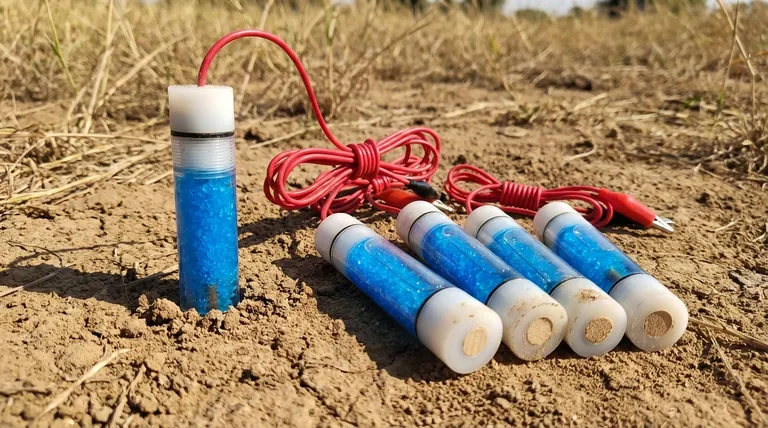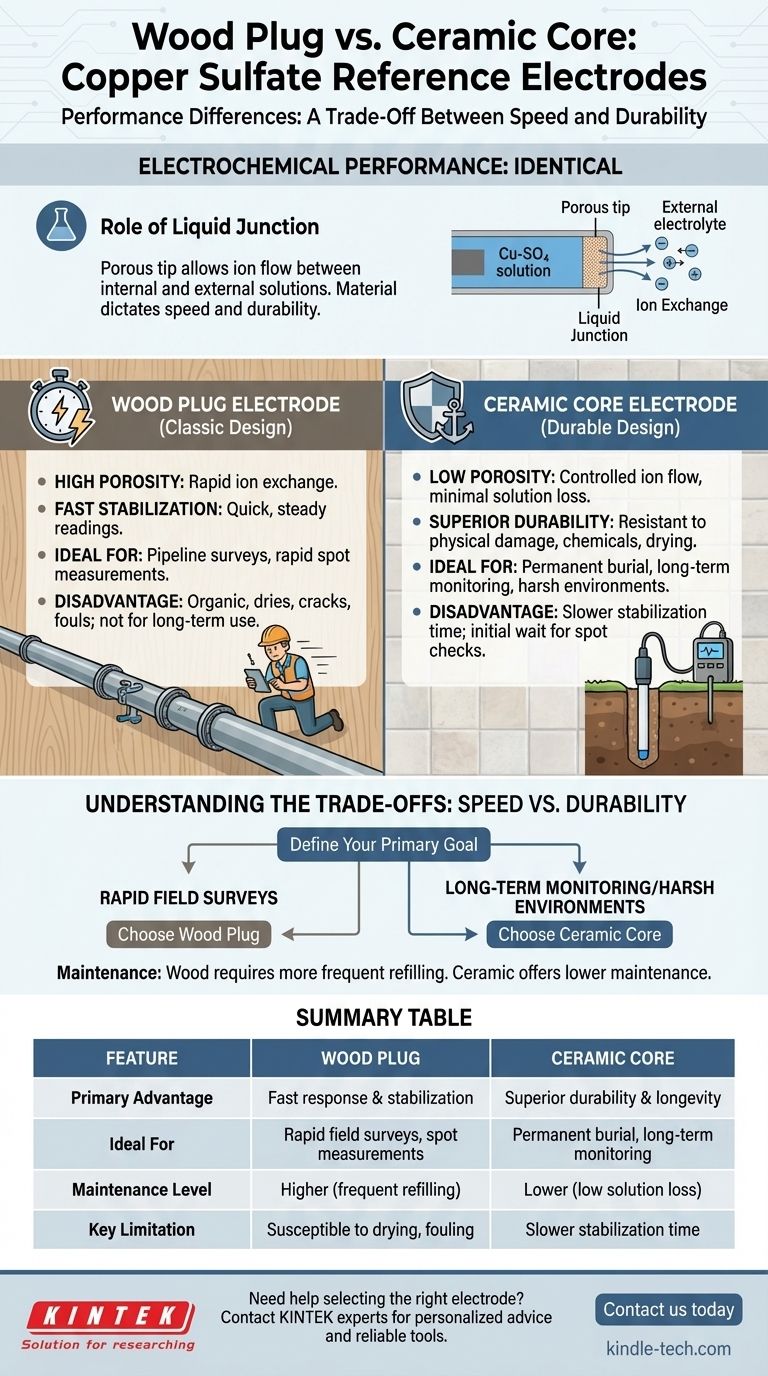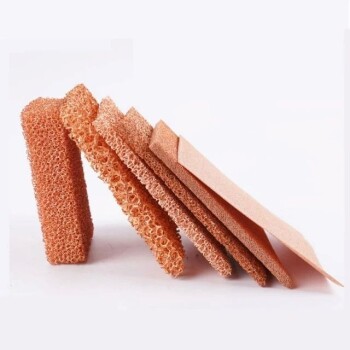From an electrochemical standpoint, the performance of a wood plug and a ceramic core copper-sulfate reference electrode is identical. Both are designed to provide the same stable reference potential. However, their practical performance and suitability for a given task differ significantly due to the physical properties of their liquid junction material.
The choice between a wood plug and a ceramic core electrode is not about which provides a more accurate measurement, but is a critical trade-off between measurement speed and long-term durability.

The Role of the Liquid Junction
The core function of a reference electrode is to maintain a stable, known potential. This requires a reliable electrical connection to the environment you are measuring, such as soil or water.
What is the Junction?
The liquid junction is the porous tip of the electrode that allows for this connection. It lets ions flow between the internal copper-sulfate solution and the external electrolyte, completing the circuit without significantly contaminating the internal solution.
Why the Material Matters
The material used for this junction—either wood or ceramic—dictates how quickly this ion exchange happens and how well the electrode withstands its environment. This is the source of all practical performance differences.
Profiling the Wood Plug Electrode
Wood plug electrodes are a classic design often favored for their responsiveness in specific field applications.
Key Advantage: Speed and Responsiveness
The relatively high porosity of the wood plug allows for a rapid exchange of ions. This means the electrode stabilizes very quickly, giving you a fast, steady reading.
This is ideal for applications like pipeline surveys where an operator moves the electrode from point to point and needs to take many readings in a short amount of time.
Key Disadvantage: Environmental Susceptibility
Wood is an organic material. It can dry out and crack if stored improperly, become fouled by contaminants in the soil, or physically degrade over time.
This makes it less suitable for permanent or long-term installations where it will be left unattended in the field for extended periods.
Profiling the Ceramic Core Electrode
The ceramic core electrode was developed to overcome the durability limitations of the wood plug.
Key Advantage: Durability and Longevity
Ceramic is a hard, inert material that is highly resistant to physical damage, chemical attack, and drying out. This makes it exceptionally durable for harsh field conditions.
Its controlled, low-porosity design also ensures minimal loss of the internal solution over time, reducing maintenance needs and potential drift during long-term monitoring.
Key Disadvantage: Slower Stabilization Time
The same low porosity that makes ceramic durable also restricts the flow of ions. This means the electrode takes slightly longer to stabilize and provide a steady reading.
For an operator taking spot measurements, this added wait time at each location can be a significant drawback. However, for a permanently installed electrode, this initial stabilization time is irrelevant.
Understanding the Trade-offs: Speed vs. Durability
Your choice ultimately depends on which factor is more critical for your specific task. There is no single "best" electrode, only the right electrode for the job.
When to Prioritize Speed (Wood Plug)
Choose a wood plug electrode for active surveys where you are taking numerous, sequential measurements. Its fast response time will significantly improve efficiency in the field.
When to Prioritize Durability (Ceramic Core)
Choose a ceramic core electrode for any application involving permanent burial, long-term monitoring, or use in harsh, contaminated, or very wet environments. Its robustness is paramount for reliable, low-maintenance data over time.
Maintenance and Lifespan
The wood plug may require more frequent refilling of the copper-sulfate solution and is more likely to need replacement due to physical degradation. The ceramic core is built for a longer, lower-maintenance service life.
Making the Right Choice for Your Application
To select the correct electrode, you must first define your primary operational goal.
- If your primary focus is rapid field surveys: Choose the wood plug electrode for its fast response and stabilization time.
- If your primary focus is long-term monitoring or permanent installation: Choose the ceramic core electrode for its superior durability and low solution loss.
- If your primary focus is working in harsh or contaminated environments: The ceramic core's chemical and physical robustness makes it the safer, more reliable choice.
Ultimately, understanding these trade-offs empowers you to select the tool that best fits your specific application and workflow.
Summary Table:
| Feature | Wood Plug Electrode | Ceramic Core Electrode |
|---|---|---|
| Primary Advantage | Fast response & stabilization | Superior durability & longevity |
| Ideal For | Rapid field surveys, spot measurements | Permanent burial, long-term monitoring, harsh environments |
| Maintenance Level | Higher (more frequent refilling) | Lower (low solution loss) |
| Key Limitation | Susceptible to drying, fouling, and degradation | Slower stabilization time |
Need help selecting the right reference electrode for your laboratory's specific workflow?
KINTEK specializes in lab equipment and consumables, serving laboratory needs. Our experts can help you choose between wood plug and ceramic core electrodes to ensure optimal performance for your corrosion monitoring or soil testing applications.
Contact us today for personalized advice and to explore our range of reliable electrochemical tools!
Visual Guide

Related Products
- Copper Sulfate Reference Electrode for Laboratory Use
- Rotating Platinum Disk Electrode for Electrochemical Applications
- Reference Electrode Calomel Silver Chloride Mercury Sulfate for Laboratory Use
- Metal Disc Electrode Electrochemical Electrode
- Glassy Carbon Electrochemical Electrode
People Also Ask
- Where should the copper copper sulfate reference electrode be placed to obtain an accurate reading? Ensure Correct Structure-to-Soil Potential Measurement
- What are the components of a copper sulfate reference electrode? Essential Parts for Stable Voltage Measurement
- What are the advantages and disadvantages of the wood plug type copper sulfate reference electrode? Speed vs. Durability Explained
- What are the performance characteristics of a copper sulfate reference electrode? Unmatched Stability for Field Corrosion Testing
- What is the operating principle of a copper sulfate reference electrode? Reliable Potential Measurement Explained



















